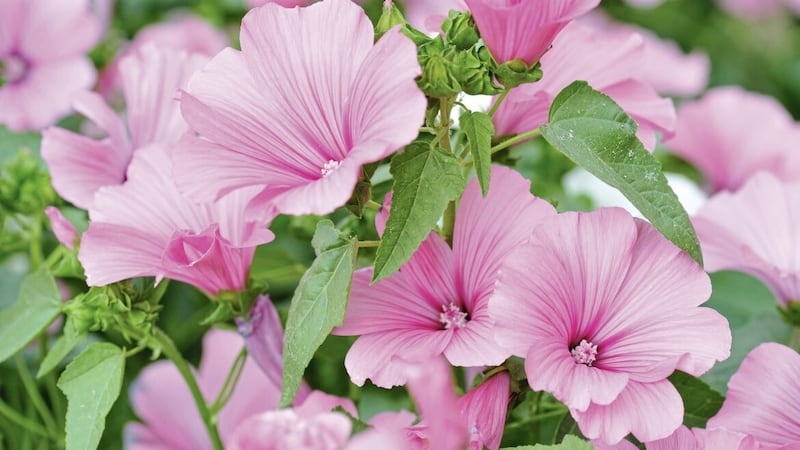FOR anybody who lives close to the coast, the sea mallow is a familiar sight. It thrives a yard or less from where the rock is exposed, rooted deep in the last of the sandy soil, its downy leaves and flexible wood necessary requirements for the windswept location.
This, I believe, is the wild, close cousin of the lavatera that I bought on impulse two years ago and is therefore still confined to a pot. More often than not, I'd actually refer to it as 'mallow', its common name, as much out of laziness (it comes out easier) than any desire to get down with the kids.
The lavatera/mallow in the pot isn't the first I've had. In fact, I'd credit this shrub with being partly responsible for fuelling my long-held affection for gardening. Twenty years ago, when my interest in all things horticultural was in its infancy, I was given a young lavatera by my dad, who'd grown it from a cutting. Within two years, it was twice my height, and by the time Lúnasa arrived was covered in soft, pinky-purple blooms.
It's a difficult shrub to photograph, as few pictures can adequately capture its full beauty and scale. More often than not it ends up looking like a bedraggled weed long past its best. For that reason, it's best to focus on the flowers – as above – which in addition to appealing to our human sensibilities, also find favour with bees and other beneficial insects.
And it's not just the flowers that prove tempting, as apparently the Romans ate the leaves and seeds of lavatera. The seed-eating tradition is said to persist today in East Anglia, where they are known as 'pick cheeses'.
My fondness for lavatera stemmed from the fact that it cost me nothing, yet brought an almost instant maturity to a new garden that was lacking elsewhere. Several were subsequently cultivated from the original lavatera I inherited.
There are fewer plants easier to propagate with softwood cuttings and few shrubs that grow quicker. Couple those characteristics with its profusion of eye-catching flowers over the summer months and you can understand why I – like gardeners across the world – took very quickly to lavatera.
But as fans of Blade Runner know only too well, the light that burns twice as bright burns half as long – and so it is with lavatera. This fantastic, floriferous shrub grows quickly and vigorously, and therefore has a relatively short lifespan. A good pruning regime will prolong life, but the best solution is to propagate your own and keep the line alive.
Favourite cultivars in the mallow stable include Lavatera x clementii 'Barnsley' and 'Rosea' (both RHS Award of Garden Merit plants). The flowers of 'Barnsley' are white with red eyes, 'Rosea's' are dark pink.
The evocatively named Lavatera 'Burgundy Wine' flowers profusely and bears dark pink flowers. 'Kew Rose' is another winner, bearing loads of flowers right through the summer, in this case bright pink. Each of these will reach a height and spread of 2m in suitable conditions and the gorgeous flowers are all a similar size at approximately 7cm across.
Perhaps working best in an informal garden, lavatera is an excellent plant for beginners and generally free of pests and diseases.








